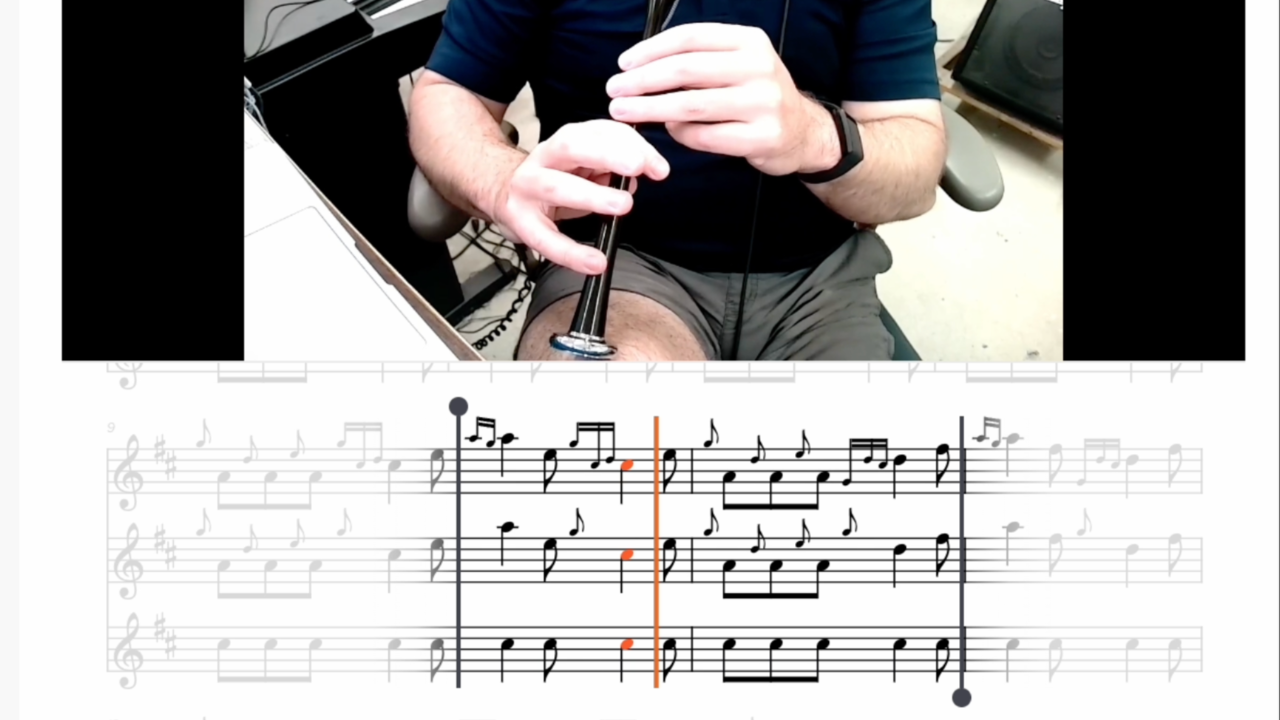Crossing Noise Secrets
May 29, 2024
Pipers at all levels can find pesky crossing noises creeping into our playing.
Do you know the different kinds, how to eliminate them, and what causes them?
The answer, especially to the last one, may surprise you…
What are crossing noises?
By definition, a crossing noise is any unintended sound that happens during a note-change.
They happen when two or more fingers don’t move at the same time.
Crossing noises occur in three main categories.
1. Lift/drop crossing noise
This type may occur when a note change involves lifting at least one finger while dropping one or more. For example, going from Low A to C. Both are bottom hand notes, but this transition requires dropping the Low A finger (pinky) and lifting the C and B fingers, all simultaneously.
2. Rolling crossing noise
You may encounter this when you “roll” from one note to another, but accidentally pass through another note. For example, when moving from low G to B, you need to lift your Low A and B fingers precisely together to form the B. You end up with a rolling crossing noise when the Low A (pinky) finger is lifted first, followed by the B finger, before finally landing on the B. We should only hear two sounds, Low G to B, not three sounds.
3. Phantom crossing noise
The elusive phantom crossing noise is more subtle, and may not be as obvious. It involves false fingering. For example, an “open” C, with only the D finger down, instead of both the D and Low A fingers down. It might not sound “too bad” on the practice chanter, but the difference will be audible on the full pipes.
How do you get rid of them?
All note changes happen in a musical groove, and contrary to popular belief, ‘slow fingers’ or ‘lack of practice’ aren’t to blame for most crossing noises.
A lack of rhythmic control is actually the culprit in the vast, vast majority of instances. Crossing noises, at their core, are a timing mishap between two or more fingers.
Traditionally, most tutors would advise to just repetitively practice note changes or work on your muscle memory between notes in the scale (and those will help, to a certain extent).
But if you work on improving your overall rhythm, crossing noises will incidentally take care of themselves, too.
The Piper’s Dojo Weekly Show brings you weekly advice about how to be a better bagpiper. Tune into our weekly livestreams on our Facebook page, subscribe to our YouTube channel or wherever you listen to your favorite podcasts!
Stay connected - subscribe to our free Weekly Digest!
Get bagpipe knowledge delivered to you every Monday! Tips and tricks, podcasts, special offers, and more.
We hate SPAM. We will never sell your information, for any reason.




